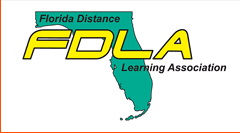Abstract
Since the democratic opening of the country (the Dominican Republic), in past decades and the subsequent phenomena of Worldalization, Globalization and the Influences of the Knowledge Society and Computerization, our society and with it the national educational system at all levels has been undergoing a series of changes and influences not ignored in the order for the teachings of foreign languages in our institutions of higher education and specifically at the Universidad Autonoma de Santo Domingo-UASD- In addition to the social, economic and political phenomena mentioned above, there are also the migrations of millions of Dominicans to mostly to the United States and Europe, which, in addition to the usual contribution in remittances, brings a new dimension of the Dominicanity as a result of the influence of the inevitable cultural and linguistic exchange that this phenomenon entails. Another phenomenon that occupies our attention, in addition to migration, is the recent development of the economic model of the Service industries, that is, free zones and tourism, which, like sugar mills and mining in certain areas of our national geography brought with them the first bilingual schools in the country in the recent past. This has caused a proliferation of language schools and institutes and courses like the English Immersion Programs sponsored by the Ministry of Higher Education, that have reaffirmed the imprint of two institutions: The Instituto Cultural Dominico-Americano (now a university) and the School of Languages of the UASD University, as the two of the oldest and leading institutions in the teaching of the English language in our country. In such a way, that a phenomenon that we must comprehend and understand in our students of advanced subjects in the language career (Degree Program), it is that of ‘translanguaging’ or translanguage, in order ii to allow the usage of Spanish-original words or expressions , and that occurs in a context where it is assumed that the only language to be expressed is English, as suggested by the most modern methodologies of language teaching that emphasize the unique use of the language to learning (Target language) and in a communicative way within the classroom, that is, the communicative approach is prioritized more than the learning of grammatical norms or rules as suggested by the so-called Communicative Approach, (Larsen Freeman, 2011), it is in this exclusive context where it emerges in our students the practice of translanguaging or translanguage,(Not to be confused with Code-switching), which was a term coined by the Welsh pedagogue Cen Williams (1980) as a pedagogical practice in which students are asked to alternate several languages, for a more effective or receptive use, as for example, when they are in the presence of Latinisms or 'cognates' (words that have the same root [Latin] in both English and Spanish) in the English language.
Recommended Citation
TAVAREZ-DACOSTA, PEDRO J. Dr. and Arias Reyes, Fransheska Lic.
(2025)
"Translanguaging within the Context of Dominican College Pedagogy,"
FDLA Journal: Vol. 9, Article 11.
Available at:
https://nsuworks.nova.edu/fdla-journal/vol9/iss1/11
Included in
Online and Distance Education Commons, Teacher Education and Professional Development Commons
